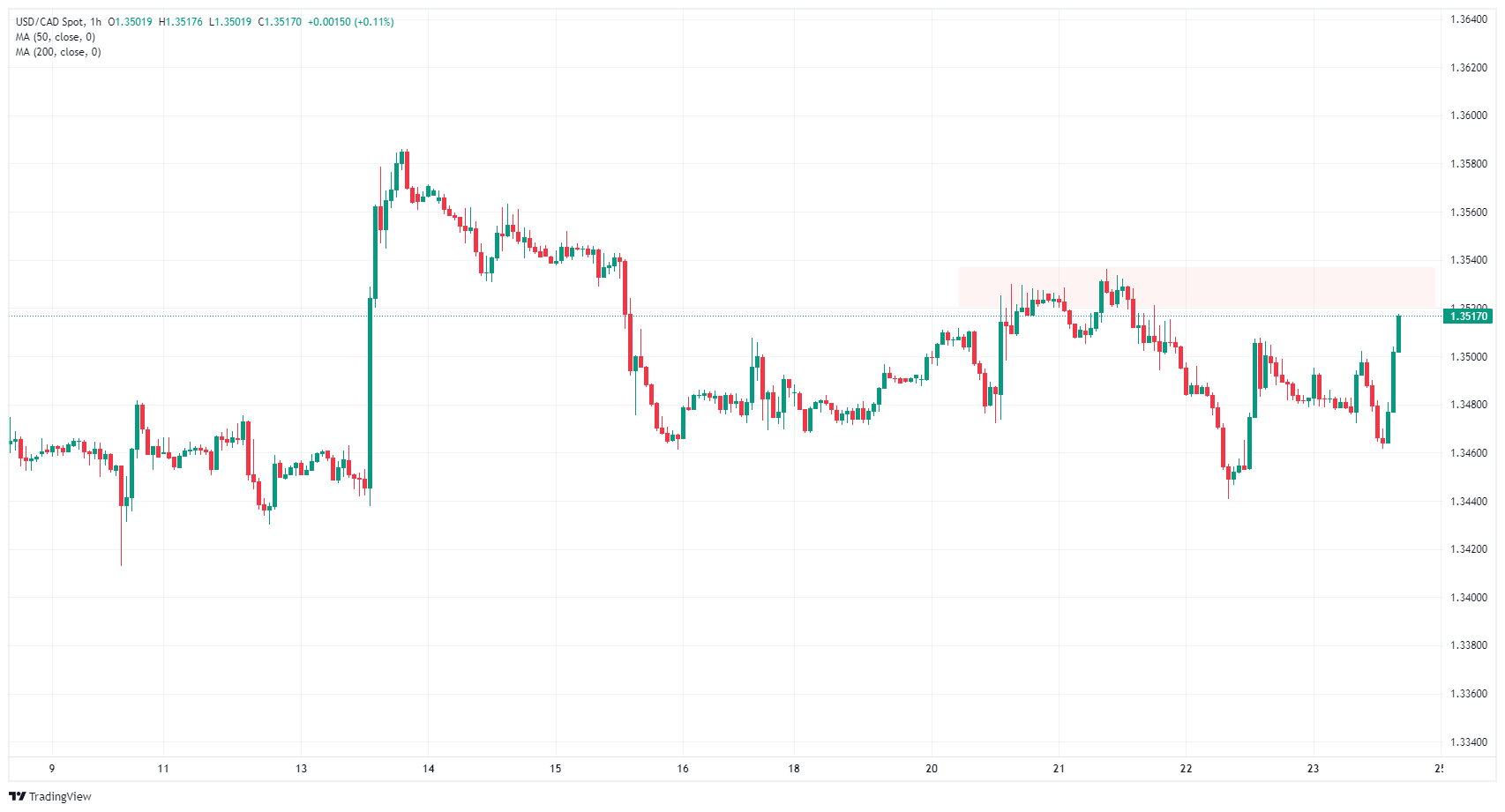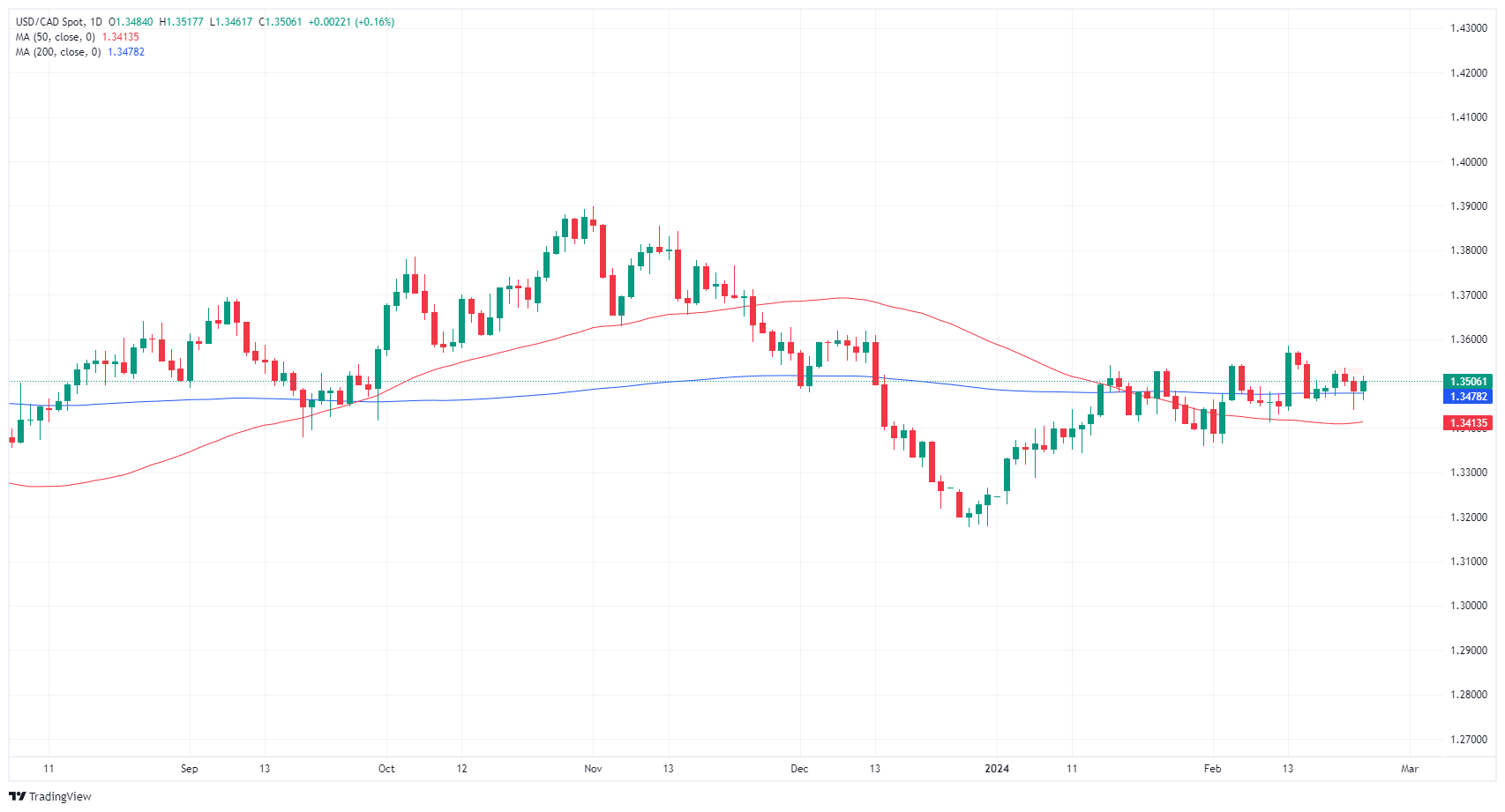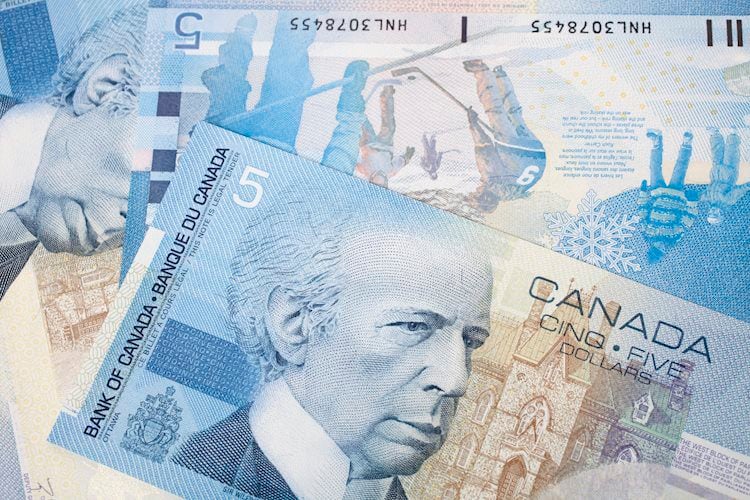- USD/CAD dipped to 1.3461 before a US-session surge back to 1.3500.
- It’s a thin Friday on the economic calendar.
- USD/CAD put a lot of effort going nowhere this week.
USD/CAD looked in both directions on Friday as markets see thin action heading into the week’s closing bell. It was a relatively sedate trading week for the pair with the US Dollar (USD) gaining around a third of a percent against the Canadian Dollar (CAD).
Next week brings a slew of data for both the US and Canada with US Gross Domestic Product (GDP) on Wednesday and Canadian GDP on Thursday alongside US Personal Consumption Expenditure (PCE) figures. Next Friday also brings Purchasing Managers Index (PMI) figures for both Canada and the US.
Daily digest market movers: USD/CAD churns the midrange on quiet Friday
- Friday markets look thin, leaving USD/CAD open to drift in the middle.
- Thursday’s mixed PMIs for the US and Retail Sales for Canada leave the pair with little directional momentum to wrap up the week.
- Next week is set to open quiet as well with only January’s US New Home Sales on the docket for Monday.
- US New Home Sales Change last printed at 8.0% in December, New Home Sales are expected to increase slightly to 680K from 664K.
- Tuesday also sees mid-tier data with US Durable Goods figures for January forecast to print at -4.0% versus the previous 0.0%.
- Canada is absent from the economic calendar until Wednesday’s Current Account figures for the fourth quarter, which last printed at -3.22 billion.
Canadian Dollar price this week
The table below shows the percentage change of Canadian Dollar (CAD) against listed major currencies this week. Canadian Dollar was the strongest against the Japanese Yen.
| USD | EUR | GBP | CAD | AUD | JPY | NZD | CHF | |
| USD | -0.37% | -0.53% | 0.24% | -0.38% | 0.17% | -0.96% | 0.01% | |
| EUR | 0.35% | -0.18% | 0.59% | -0.02% | 0.52% | -0.60% | 0.38% | |
| GBP | 0.53% | 0.16% | 0.76% | 0.14% | 0.68% | -0.44% | 0.53% | |
| CAD | -0.23% | -0.59% | -0.74% | -0.60% | -0.06% | -1.19% | -0.21% | |
| AUD | 0.38% | 0.01% | -0.14% | 0.60% | 0.54% | -0.58% | 0.39% | |
| JPY | -0.17% | -0.55% | -0.69% | 0.06% | -0.57% | -1.14% | -0.17% | |
| NZD | 0.93% | 0.57% | 0.41% | 1.17% | 0.56% | 1.09% | 0.94% | |
| CHF | -0.02% | -0.39% | -0.55% | 0.21% | -0.39% | 0.15% | -0.96% |
The heat map shows percentage changes of major currencies against each other. The base currency is picked from the left column, while the quote currency is picked from the top row. For example, if you pick the Euro from the left column and move along the horizontal line to the Japanese Yen, the percentage change displayed in the box will represent EUR (base)/JPY (quote).
Technical analysis: 1.3500 is proving a tough number to beat
USD/CAD continues to cycle 1.3500 as the pair experiments with losing momentum in the longer term. The 1.3500 figure remains a sticky major level for the pair, but a heavy supply zone near 1.3530 could prove a viable selling region for particularly brave traders as the pair etches in the beginnings of a Fair Value Gap (FVG) on Friday.
USD/CAD continues to get mired in the 200-day Simple Moving Average at 1.3478, but a rough bullish pattern is still bullish, and the long-term moving average is providing a technical floor for bidders to push off of.
USD/CAD hourly chart
USD/CAD daily chart
Canadian Dollar FAQs
The key factors driving the Canadian Dollar (CAD) are the level of interest rates set by the Bank of Canada (BoC), the price of Oil, Canada’s largest export, the health of its economy, inflation and the Trade Balance, which is the difference between the value of Canada’s exports versus its imports. Other factors include market sentiment – whether investors are taking on more risky assets (risk-on) or seeking safe-havens (risk-off) – with risk-on being CAD-positive. As its largest trading partner, the health of the US economy is also a key factor influencing the Canadian Dollar.
The Bank of Canada (BoC) has a significant influence on the Canadian Dollar by setting the level of interest rates that banks can lend to one another. This influences the level of interest rates for everyone. The main goal of the BoC is to maintain inflation at 1-3% by adjusting interest rates up or down. Relatively higher interest rates tend to be positive for the CAD. The Bank of Canada can also use quantitative easing and tightening to influence credit conditions, with the former CAD-negative and the latter CAD-positive.
The price of Oil is a key factor impacting the value of the Canadian Dollar. Petroleum is Canada’s biggest export, so Oil price tends to have an immediate impact on the CAD value. Generally, if Oil price rises CAD also goes up, as aggregate demand for the currency increases. The opposite is the case if the price of Oil falls. Higher Oil prices also tend to result in a greater likelihood of a positive Trade Balance, which is also supportive of the CAD.
While inflation had always traditionally been thought of as a negative factor for a currency since it lowers the value of money, the opposite has actually been the case in modern times with the relaxation of cross-border capital controls. Higher inflation tends to lead central banks to put up interest rates which attracts more capital inflows from global investors seeking a lucrative place to keep their money. This increases demand for the local currency, which in Canada’s case is the Canadian Dollar.
Macroeconomic data releases gauge the health of the economy and can have an impact on the Canadian Dollar. Indicators such as GDP, Manufacturing and Services PMIs, employment, and consumer sentiment surveys can all influence the direction of the CAD. A strong economy is good for the Canadian Dollar. Not only does it attract more foreign investment but it may encourage the Bank of Canada to put up interest rates, leading to a stronger currency. If economic data is weak, however, the CAD is likely to fall.
